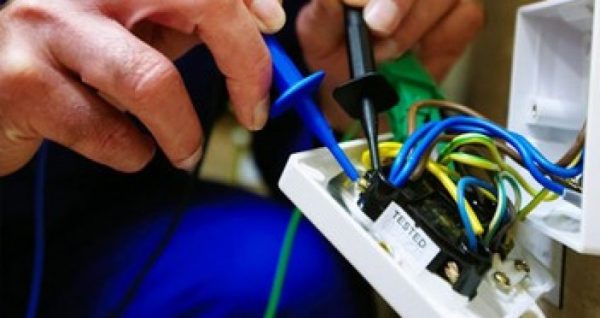
How does the assembly of the internal installation of home electricity occur
Compositions are formed Interior For the various independent circuits of the house from several parts, which start from the small automatic switches (PIA) in the control and general protection panel .
Configure a local internal installation
- Independent circuits
The independent circuits of the house are the set of electrical circuits that make up the internal internal installation , which feed the various installed receivers ( lighting points and power outlets ( sockets ).
All circuits are individually protected by their corresponding PIA . Also, with an additional safety mechanism, IG generally protects all circuits in the home .
- Internal wiring i.e. internal installation
All independent circuits in a home are powered by two conductors ( phase and neutral), carrying single -phase, low- voltage alternating current . In addition to them, there is a conductor to connect to the building’s ground network . These conductors consist of copper with plastic insulation .
- Phase conductor : It is the active conductor that carries current from the electrical panel to the various light points and power outlets in the installation . The color of the insulation can be brown , black or grey .
- Neutral conductor : is the returning conductor that closes the circuit, allowing current to return from light points and sockets . The insulation color is always blue .
- Ground conductor : A conductor that normally does not carry current if the circuit is working properly . It is connected to the building's ground network , and works to expel possible leaks or current derivatives towards the ground electrodes . Its insulation is yellow and green in color .
The conductors for each independent circuit start from its corresponding PIA in the electrical panel , and run through the house inside corrugated PVC pipes embedded in the wall .
The power supply for each receiver ( light points and sockets ) is provided by bypassing the main conductors of the independent circuit , in junction boxes . Junction boxes ( junction boxes ) are plastic boxes where connections and connections of electrical cables are made . In order for the connection to be made correctly , terminal strips or terminals must be used .
- Degrees of home electrification
The degree of electrification of a house refers to the electrical load that must be supported by the internal installation of the aforementioned house . For example : the electrical load that must be borne by the electrical installation of a villa of 200 square meters will be much greater than what must be supported in a studio of 50 square meters ( fewer rooms , fewer light points , Fewer sockets , fewer electrical appliances ) . , etc. ).
Depending on the type of house, two different degrees of electricity are determined . Each electrical grade specifies the minimum power the installation must support at 230 volts , as well as the independent circuits the installation must have .
- Basic electrical degree .
- High degree of electricity .
Note : The electricity score is calculated by adding the power of all the receiving elements in the house, and applying a 40% reduction (as not all electrical appliances will be used simultaneously ).
- Electrical installation diagrams
To represent local internal installation , 3 types of diagrams can be used :
- Topographic chart : Representing the perspective of installation .
- Multi- wiring diagram : They represent through lines all the conductors involved in the circuit to be displayed .
- Single- line diagram : The circuit is represented by a single line in which the number of conductors it consists of are shown with intersecting bars . Use your own codes .
The most widely used representation system is the single- line diagram , because it is simpler and simplifies the drawing of electrical installations in housing plans .
- Basic circuits for internal internal assembly
In the next point , the most common electrical installations in the home will be reviewed :
- Simple point light with switch . Installing a lamp that opens and turns off with a switch .
- Press the bell button . Installing a doorbell operated by a push button ( typical for residential entrance halls )
- Point light with 2 switches . It is an electric lamp , which can be inconspicuously turned on and off from two switches . It is a typical circle in the corridors of houses , bedrooms , etc.
- Point light with low beam . The circuit consists of a lamp that can be turned on and off inconspicuously from 3 points in different locations . To set up this circuit, a crossover switch is required .
- Energy suppliers . Electrical installations for feeding power outlets , to which any electrical device can be connected .
If you want to read articles similar to the article How the assembly of the internal home electrical installation occurs
Follow us on the Jaafar Shop blog
The best store for selling hand tools and tools in Jordan and Egypt
Shop with confidence from the largest hand tools store in Jordan. At Jaafar Shop, you will find electrical tools, hand tools, measuring tools, nail drills, paint screws, and painting supplies. Hand tools and garden supplies. At Jaafar Shop, we provide you with everything you need, including screwdrivers, keys, pliers, and sets. the number. Browse our largest selection of maintenance tools and supplies:

اترك تعليق او سؤال